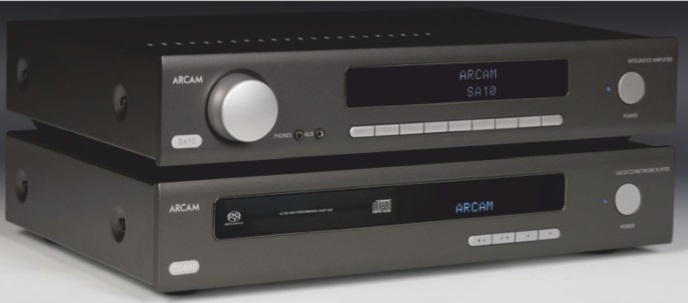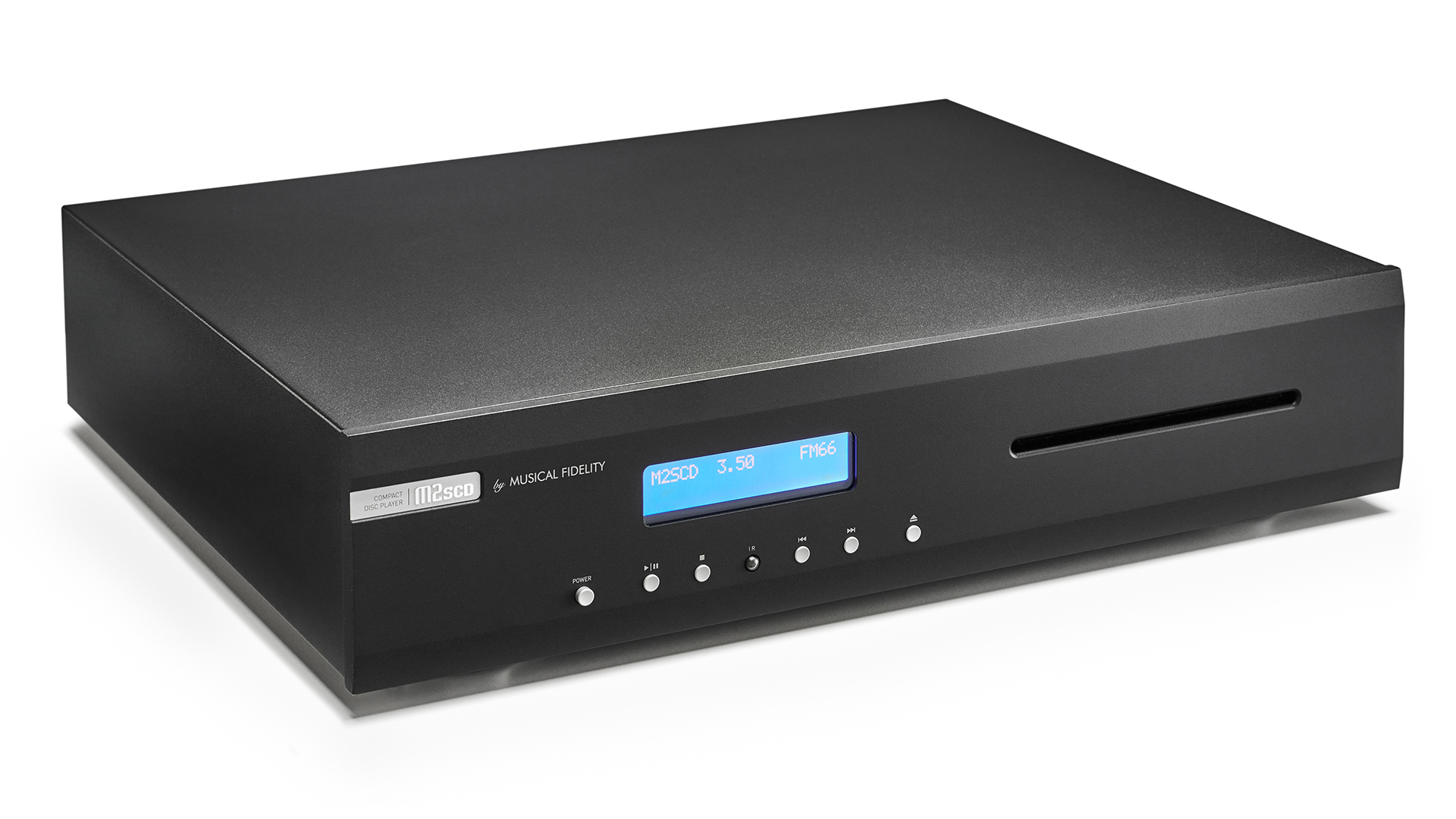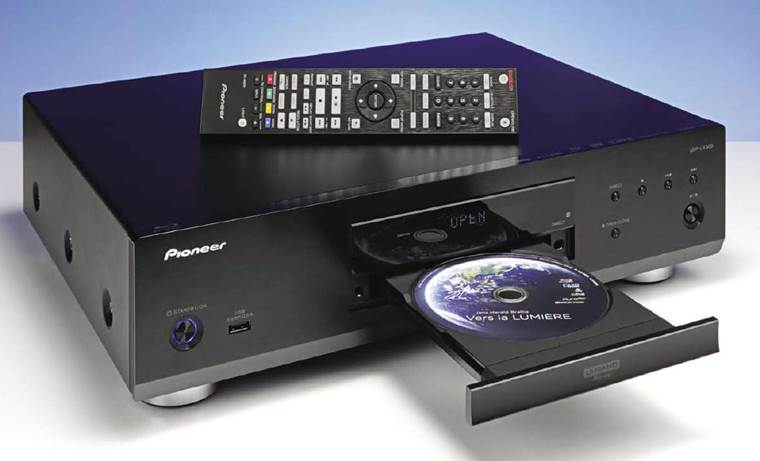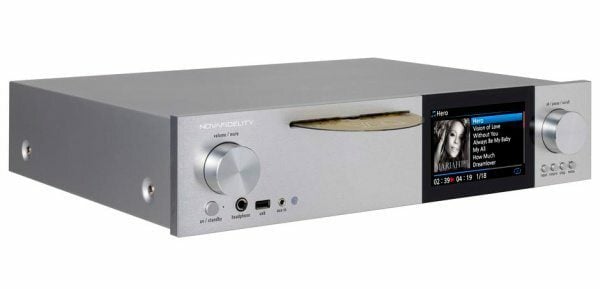ARCAM HDA CDS50 Review

Before you dismiss CD players as ‘old hat’, examine the new breed, which combines disc playing with DAC inputs and streaming functions.
Table of Contents

Many audiophiles are ‘rusted on followers of Arcam, having been fans of this British brand since its humble beginnings back in 1976, when it started life in Cambridgeshire, England, as ‘Amplification & Recording Cambridge’ — a name that was soon after sensibly abbreviated to Arcam. However, following Samsung’s purchase of Arcam (adding to a high-end hi-fi portfolio that now includes JBL, Lexicon, Revel and Mark Levinson) we suspect that many of those rusted-on followers were waiting with bated breath to see what the first new range under new ownership looked like.
As you can see, it’s basically ‘same same’ — nothing’s changed dramatically. All three components in Arcam’s new HDA (High Definition Audio) line are typically ‘Arcam’ in terms of appearance, finish and build quality, those three being the SA10 (see separate review), SA20 and the CDS50 reviewed here. And the performance? Is that the same?
EQUIPMENT
When you’re building a component that must necessarily convert digital signals to analogue signals, it makes good practical sense (and excellent commercial sense) to make sure that it can convert as many different types of digital signals to analogue as possible. Thus the new Arcam CDS50 can not only play digital music stored on CD and SACD (as well as digital music stored on CD-R and CD-RW in FLAC, WAV, AAC, AIFF, OGG,
MP3 or WMA formats), but can also play back music files you have stored on USB, on a hard drive, on your home computer network, or streamed through your network from the internet (via Ethernet or 802.11g/b/n wireless).
There is no Bluetooth connection; we admit to being a tad surprised by this. Sure, there would have been additional manufacturing costs and licensing fees involved in providing Bluetooth, but it would have made the CDS50 an even-more attractive purchase proposition than it already is. (For the record, it doesn’t have AirPlay either.)
You can also input signals digitally via S/PDIF and/or optically (Toslink) or via USB. And, in case you wish to use an external converter, the CDS50 also provides S/PDIF and optical digital outputs.
REMOTE CONTROL
You will be pleased to hear that Arcam supplies a real, honest-to-goodness, multi-function remote control with the CDS50. These days many manufacturers require their customers either to pay extra for a remote, or to load an app onto their phone or tablet. Give us a good old-fashioned infra-red remote every time! Arcam’s remote gives access to features not available via the front panel, such as display brightness switching, direct track access, display window information cycling, and playback mode (random, repeat one track, repeat all tracks). There is no option for track programming. The remote can also be used to control compatible Arcam integrated amps for volume (including mute on/off), balance, and input selection.

If you would like to control the CDS50 using your own device, Arcam has a ‘MusicLife’ app available (iOS and Android) that allows you to control (via UPnP) the audio and basic functions of this product. This appears to be a fairly new development because early publicity about the CDS50 seemed to indicate that such control was not possible. If you’re keen on bringing your own device to the party, we’d recommend a trial run at your friendly hi-fi dealer to see what can be controlled and what can’t, just in case the ‘what can’t’ is a deal-breaker for you.
Remember that for full app functionality you may need to update the firmware inside the CDS50 itself. Checking firmware status is very easy (just select ‘Firmware Update’ from the ‘Settings’ menu on the front panel). This will instantly tell you if new firmware is available and, if it is, will then give you on-screen guidance as to how to apply it.
PERFORMANCE
The first thing you notice when the disc drawer opens is that the tray is made of plastic, rather than of some more robust material, but we guess this is to be expected at the price Arcam is asking for the CDS50. Press ‘Play (either using the front panel transport controls, or those on the remote or the app) and you’ll find that the music starts quickly enough, but if you elect to skip forward a few tracks to start deeper into a disc, you’ll find the Arcam quite tardy in doing your bidding. There didn’t appear to be a track buffer, so you can’t just press the button multiple times and have it skip the requisite number of tracks: it’s instead a kind of ‘push and wait’… ‘push and wait’ process. To avoid this, simply use the direct track access controls on the remote instead, where simply pushing ‘2’ followed by ‘7’ will have the laser sledding immediately to track 27, with no delay at all.
As for the operation of the remote, we found it was really smooth, with the added bonus that while you’re using it, all the buttons are illuminated with a soft glow, which looks good no matter what the ambient light conditions, and certainly helps if you’ve turned the room lighting down low for ambience. The front-panel display has three brightness settings: ‘Off, ‘Dim’, and ‘Bright’. Indeed the remote has two brightness buttons — one for the CDS50’s display and one for the display of an Arcam amp, so you can adjust them individually.
When you do start playing your intended track, you’re going to be impressed, because the Arcam CDS50’s performance with ordinary CDs was exceptionally good. Indeed after several weeks we’d formed the impression that the sound of CDs played in the CDS50 was actually superior to what we heard when playing SACDs. There wasn’t a lot in it, mind you, but we found the CD sound definitely more to our liking. Listening to the GN Records hybrid version of ‘Belafonte at Carnegie Hall’, for example, which is a dual-layer disc of exactly the same mix with one layer recorded in SACD and the other in CD (and not to be confused with the rather horrible-sounding CD-only version produced by RCA in 1990), we found Belafonte’s voice altogether more charismatic on CD… we seemed to get a better feel for the warmth of his interpretations. Oddly enough the high frequencies also seemed a little cleaner on the CD layer than the SACD layer. Perhaps the most disconcerting part of our observations was that the SACD sound from the CDS50 was as good as the SACD sound we’ve have heard from any other SACD player… so it’s not that the SACD is inferior, but more that Arcam has really excelled itself in optimising the sound with CDs.
Listening to a straight CD (Big White’s debut album, ‘Teenage Dreams’), the echo-laden jangly guitars that kick off the opener, Bell Towersy are delivered with a superb lightness and a gloriously textured sustained sound. The kick drum sound is impressively solid, and the bass guitar sound is depthy and tuneful, providing a perfect underpinning for the band. The Arcam’s ability at the other end of the spectrum is demonstrated on Tuesday, where the delicate sound of the tapped cymbals contrasts beautifully with the fluid high frequencies (and associated harmonics) of Anna McDonald’s violin. Listen especially to the close-out to this track, which dies away quietly and brilliantly smoothly to perfect silence.
Perhaps one of the best demonstrations of the Arcam CDS50’s ability to be revealing of the music you play using it is the sound of I Cant Tell, which is the only track on ‘Teenage Dreams’ that was not recorded at Damien Gerard Studios in Sydney (having been recorded in Berlin at Paul Lincke Studios).
At the risk of making a bad pun, you certainly can tell — at least you can when listening to it using the Arcam CDS50 — that this track is the ‘odd man out’ on this CD. The cymbals are not as shimmery as on the other tracks and the sound of the kick drum not nearly so well-defined… to name just two of the most obvious differences. You Don’t Get Much is another track that’s revealing of the CDS50’s superior performance, because rather than the sound coming straight out of digital black, Big White has decided to record several seconds of studio ‘noise’ (though ‘lack of noise’ would be a better descriptor) before the strummed acoustic guitar introduces the vocal, which allowed us to hear how beautifully the Arcam CDS50 handles super-low-level noise, without introducing any digital artefacts or extraneous sounds, along with a complete lack of any dither or jitter effects. Excellent performance.
The sound of the Arcam was equally good when reproducing digital signals supplied to it ‘via the ether’ or hardwired to the digital inputs, and all bit-rates and file types were handled with equal aplomb, though every now and then the Arcam’s front panel display would display ‘No Signal’ during playback, which was obviously incorrect, so there was obviously some type of programming bug in our review player. The display also showed ‘44.1kHz’ even when playing tracks with higher sampling rates. We expect both issues will have been sorted by the time you’re reading this review.
However, it’s the quality of the sound that’s important, and we found that no matter whether we were playing music at 44.1/16 or at higher resolutions, the Arcam CDS50 sounded unfailingly smooth and sweet, with superb dynamics and incredible frequency extension.
The quietness of the backgrounds was a stand-out, as was the total lack of distortion… particularly at very low recorded levels.
CONCLUSION
No matter whether you’re old-school and prefer playing CDs (or SACDs) or new-school (and prefer to play rips, downloads or streams… wired or wirelessly), the new Arcam CDS50 does it all… and it does it all easily and gracefully while also delivering supremely good sound.
Arcam CDS50 CD/SACD/ network player
- Excellent connectivity
- Outstanding performance
- Outstanding operability
- No Bluetooth
- No USB-B for computer connection
Harmonic distortion: <0.0008%
Output voltage (@0dB): 2.2/4 5 VRMS (unbal/balanced)
Output impedance: 47 ohms unbalanced, 600 ohms balanced
DAC: ESS9038 32-bit/192kHz
Delta-Sigma Supported sample rates: optical to 96kHz; coaxial to 192kHz
USB: USB 2.0 High Speed (480Mbps)
Ethernet: 10/100Mbps
Wireless: 802.11b/g/n
Dimensions (whd): 433x87x283mm
Weight: 5.3kg
Contact: Advance Audio Australia
Telephone: 02 9561 0799





I bought this in May 2019 and can confirm all of the above comments by the reviewer. I have paired the cd player with the SA20 amp and a pair of KEF floor standing speakers. The sound is amazing in terms of clarity and range.
What is really cool though is I have JRiver media center installed on my networked pc. It is loaded with all of my cds in digital lossless format. Jriver also provide a phone ap called gizmo. So I’m able to launch gizmo, connect to my pc music library, and stream to music to the cd player DAC. The responsiveness of the player via gizmo is seamless and is one of those occasions where technology just “works”. I cant recommend highly enough.
Hi,
May i asked which Kef? I’am also looking to this set to pair it with Kef R500 speakers. But the cds50 must be not so good. Very slow response.
It’s a pity you didn’t experiment more with the MusicLife app. Arcam are fully aware it’s a dead duck but have yet to appease those of us that paid out hard earned cash. It simply does not work. Also, after two weeks, my remote gave up the ghost.
After deciding to report my findings to the supplier in the hope of an exchange or refund, I was given the runaround between Arcam (whose ‘luxury customer service’ is just abysmal – three days for an email response and never want to speak over the phone!) and RicherSounds, the supplier. Each of them saying it was the responsibility of the other.
Yes the CDS50 is a great CD player, albeit slow to respond to ANY instructions, be it on the machine or by remote, but, £700 for a good CD player? Because, after all, that is all it is capable of doing. Forget the rest. I put my situation down to a terrible experience and have vowed never to buy Arcam products nor purchase anything from RicherSounds ever again.
Excelente qualidade de som